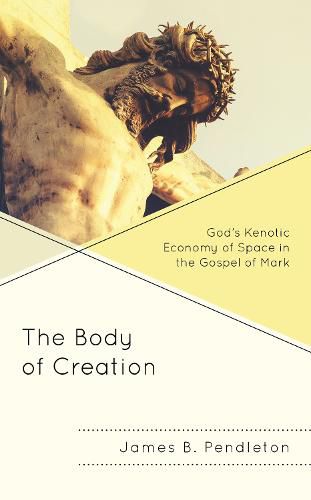Readings Newsletter
Become a Readings Member to make your shopping experience even easier.
Sign in or sign up for free!
You’re not far away from qualifying for FREE standard shipping within Australia
You’ve qualified for FREE standard shipping within Australia
The cart is loading…






In the modern period, the space we inhabit and through which we move has predominately been conceived as the mere setting for human action, ontologically separate from the body. In Markan studies, the result has been the multiplication of textual geographies that hide the spatiality of Jesus’s narrativized and, thus, living body. Rather than representing Jesus’s body as replicating the spatial configurations of dominant scribal cartographic practice (including imperial practice), James B. Pendleton shows that Mark portrays Jesus’s body as a living production of space that troubles dominant maps. Against readings of Mark that argue that Jesus is either an imperial or an anti-imperial figure, Pendleton argues that Mark presents Jesus’s body, and thus his spatiality, as both inside (as an insider) and outside (as an outsider) simultaneously, in what has more commonly being theorized recently as third spatiality, or Thirdspace. Rather than an imperial or anti-imperial economy of spatial production, Pendleton argues, Mark presents Jesus’s body within a both-and, and more economy that is kenotic, revealing God’s own royal yet emptying body.
$9.00 standard shipping within Australia
FREE standard shipping within Australia for orders over $100.00
Express & International shipping calculated at checkout
In the modern period, the space we inhabit and through which we move has predominately been conceived as the mere setting for human action, ontologically separate from the body. In Markan studies, the result has been the multiplication of textual geographies that hide the spatiality of Jesus’s narrativized and, thus, living body. Rather than representing Jesus’s body as replicating the spatial configurations of dominant scribal cartographic practice (including imperial practice), James B. Pendleton shows that Mark portrays Jesus’s body as a living production of space that troubles dominant maps. Against readings of Mark that argue that Jesus is either an imperial or an anti-imperial figure, Pendleton argues that Mark presents Jesus’s body, and thus his spatiality, as both inside (as an insider) and outside (as an outsider) simultaneously, in what has more commonly being theorized recently as third spatiality, or Thirdspace. Rather than an imperial or anti-imperial economy of spatial production, Pendleton argues, Mark presents Jesus’s body within a both-and, and more economy that is kenotic, revealing God’s own royal yet emptying body.